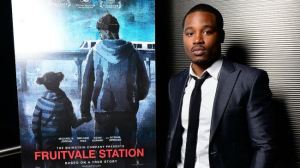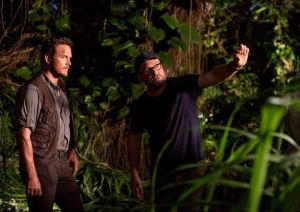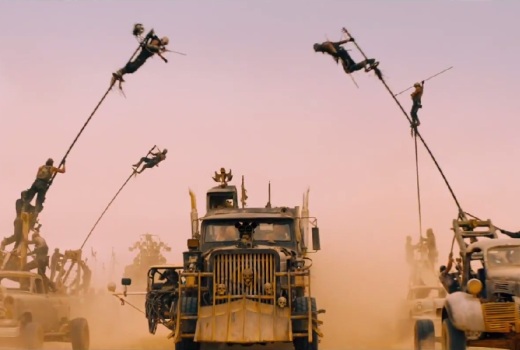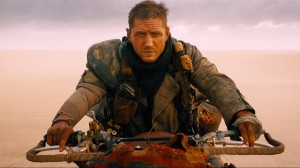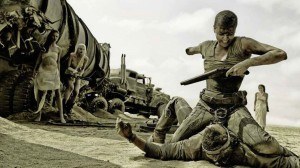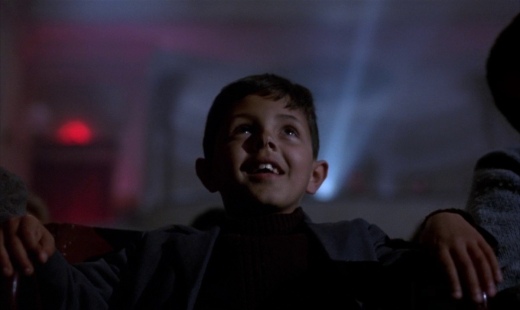When Quentin Tarantino sits down for an interview, you know that the entertainment press and film lovers of all shapes will pounce on his idiosyncratic remarks. This summer, in the middle of editing The Hateful Eight (slated for release Christmas Day), Tarantino spoke with New York Magazine’s Lane Brown. Almost everything covered in the interview got a reaction from the director’s fans, from his comments about Barack Obama to True Detective. (For the record, Tarantino loves the president, but found the heralded first season of HBO’s crime anthology to be “really boring.”)
However, one of Tarantino’s responses didn’t get a lot of commentary, even though it shows a surprising lack of film knowledge from, arguably, the world’s most famous cinephile. When asked if there were younger filmmakers he was excited about today, Tarantino responded with “Noah Baumbach.” As Brown retorted to the Oscar-winning screenwriter, correctly, the writer/director of indie comedies like The Squid and the Whale has “been making movies for almost as long as you have.” Baumbach is 46, six years younger than Tarantino. The Pulp Fiction director then offered another choice: Mark and Jay Duplass. They are, respectively, 38 and 42.
These egregious oversights were quite surprising for a filmmaker who one expects wouldn’t miss an opportunity to champion a rising creative voice. At the same time, Tarantino’s responses hint at a problem with the current North American film scene that should only become clearer as the years pass. The number of young visionaries making movies today is tiny.
Take a look at many of the high-profile fall releases destined for critical acclaim and/or Oscar glory, and virtually all of them come from directors that were making films 20 years ago. Beyond Tarantino (52 years old), we have new films from Jay Roach (48), J.J. Abrams (49), Guillermo Del Toro (50), Sam Mendes (50), David Fincher (53), Todd Haynes (54), David O. Russell (57), Ron Howard (61), Robert Zemeckis (64), Barry Levinson (73) and Ridley Scott (77).
Where are all the fresh faces, all the cool directors in their twenties and thirties breaking with convention in the face of big studio mediocrity? There have got to be a few taking risks with small budgets and turning the heads of cinephiles everywhere. Nevertheless, the lack of strong young directors is the result of a 21st century imbalance in the films that become hits in North America today. In a post-9/11, risk-averse atmosphere, there are the studio hits, safe bets with budgets in the hundreds of millions, on one side. On the other, we have the micro-budget films that ride Sundance acclaim to a box office sum. However, only a couple of independent films properly break through each year.
Over the past 10 years, the number of independent films released in the United States has doubled. It is almost impossible for an independent film to get any coverage in a major publication, let alone find an audience willing to catapult the title into the hearts and minds of a wider audience. Too many talented directors with big ideas and the chops to have legendary careers are languishing as their films register as less than a blip on the moviegoing radar.
It is not surprising that many of these young auteurs have shifted their stories to the small screen, or more specifically, HBO: those names include Lena Dunham, Pariah director Dee Rees and Cary Joji Fukunaga, of Sin Nombre (and now True Detective) fame. Still, many young directors who make an impression with one film find it tough to make their follow-up project. Nearly three years after getting a Best Director nomination for Beasts of the Southern Wild, Benh Zeitlin hasn’t made anything else. Winter’s Bone director Debra Granik (who received an Oscar nomination for that 2010 drama) finally released her follow-up this year, a documentary. I doubt any of you can name its title without Internet research.
It used to be that major studios wouldn’t feel comfortable handing over money to directors who didn’t have much experience. Today, that seems to be the norm. The future of big franchises is in the hands of near-amateurs. Gareth Edwards leapt from a $500,000 genre film to Godzilla. Colin Trevorrow, the director of a $750,000 indie called Safety Not Guaranteed was handed the key to Jurassic World (and, now, a Star Wars episode). The indie filmmakers getting widespread attention are those who get plucked by Hollywood to help their summer tentpoles blossom. Otherwise, many visionaries will wait years until somebody is willing to help finance or distribute their newest project.
A studio can take a mostly untested director and hire them to work on a film with an exponentially larger budget. But, more often than not, the restrictions of that studio will wipe away the filmmaker’s creative sensibility. One used to need a diverse resume of work before a major studio entrusted them with a multimillion-dollar franchise. Times have changed, and not for the better. Can one find Trevorrow’s authorial mark anywhere within the bombastic Jurassic World? Since many of these filmmakers are so eager to work again, they don’t mind losing their autonomy. But, many years from now, with a probably tiny pool of filmmakers to swim with, audiences will.
Many of the most beloved directors of superhero films got the gig for brawnier work after a decade of proving their worth with medium budgets. Bryan Singer didn’t go from Public Access to X-Men, just as Christopher Nolan didn’t land Batman Begins immediately after Following. If that had been the case, as it is today, we would have been denied those directors’ two best films: The Usual Suspects and Memento. Spielberg had to make The Sugarland Express to get to Jaws. Heck, Martin Scorsese had to wait 30 years after Mean Streets until he got to release Gangs of New York.
One may think age doesn’t make a difference in Hollywood. But, in almost any circumstance a film historian can think of, it is youthful directors that become the forerunners of every major cultural movement. Charlie Chaplin and Buster Keaton were in their late twenties and early thirties when they redefined screen comedy in the silent era. Orson Welles made Citizen Kane at 26. Sergei Eisenstein was also in his mid-twenties when he directed Battleship Potemkin. François Truffaut, Louis Malle and Jean-Luc Godard first captured the spirit of being young and French when they were young French filmmakers. Martin Scorsese and Steven Spielberg got their first rave reviews in the early 1970s, before they hit 30. The same goes for filmmakers like Steven Soderbergh, Paul Thomas Anderson and, yes, Tarantino, two decades later.
Film history has depended on the unique visions of young directors to usher in change. Where is that change in 2015?
There are a few noticeable exceptions. Canadian auteur Xavier Dolan, 26, has turned into one of the world’s most fascinating directors, his films (like Mommy and Laurence Anyways) awash with LGBT themes, swooning pop music and arresting inter-generational conflict. 30-year-old Damien Chazelle scored an Oscar nomination for Whiplash and is hard at work on a jazz-infused film with Ryan Gosling and Emma Stone set for release next summer. And, yes, there is one exciting high-profile release from a director under 30 coming this autumn: Creed, from Fruitvale Station director Ryan Coogler.
It may not seem like a problem, since there are a lot of intriguing fall releases that are probably more than worth the admission price. However, the fact that so few of them come from new faces spells trouble for the future. In 2035, when many of our current filmmakers have retired or passed on, who will be the big names directing the year’s most anticipated films?
Nevertheless, I will be there opening weekend to see the new films from Chazelle, as well as Damián Szifron (Wild Tales), Destin Daniel Cretton (Short Term 12), Joachim Trier (Oslo, August 31st) and Céline Sciamma (Girlhood). I am excited for new films from Jeremy Saulnier (Blue Ruin), Jeff Nichols (Take Shelter), Marielle Heller (The Diary of a Teenage Girl) and Sean Durkin (Martha Marcy May Marlene).
These are filmmakers telling heartfelt, compelling stories about fascinating men and women. But it becomes more of a struggle to directly answer the question of the young filmmakers we’re most excited about. Worse, the director of Reservoir Dogs cannot even think of one. With indie directors struggling for attention to the left and a select few rising to prosperity to the right, we’re stuck in the middle with whom?


